Bishapur, Palace
Palace
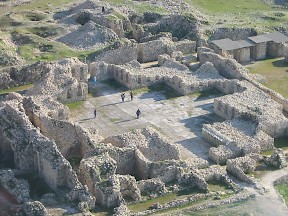
The palace of Bishapur was excavated by French archaeologists in the late 1930s. They found a cross-shaped central room and several smaller halls adjacent to it. The interpretation of these structures is very difficult.
To start with, there is the puzzle of the cross-shaped hall. According to the original excavators, there was a large dome (Ø20 meters) that covered the entire area, but the walls appear to be unsufficiently strong to support such a heavy superstructure. Probably, the building in reality consisted of four half vaults (iwans) and an open square. If so, it belongs to the same building type as the "four iwan mosque", which was designed in the Middle Ages to create a real, Iranian space for prayer.
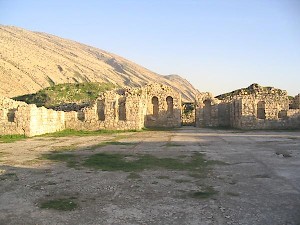
Another puzzling feature is the presence of sixty-four niches, which were apparently decorated with statues. However, freestanding sculpture, although not unheard of in Sasanian Iran - the Bishapur cave is a case in point - is rare.
Mosaics have been found in several rooms, and we can be certain that they were not made by Iranian artists. The Dionysiac head, for example, does not fit into the Iranian tradition, if only because it has a laurel wreath, a Roman symbol unknown in Sasanian Persia. Almost certainly, the makers of the mosaic were from Antioch, which was well-known for its mosaic makers and was captured by Shapur in 253 and 260.
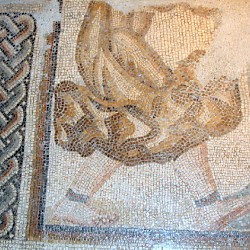 Bishapur, Palace, Mosaic of man dressed as an ostrich |
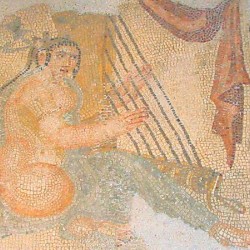 Bishapur, Palace, Mosaic of a musician |
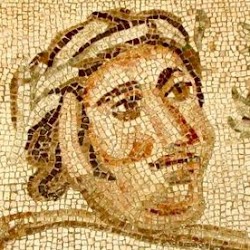 Bishapur, Palace, Mosaic of a Dionysiac head |
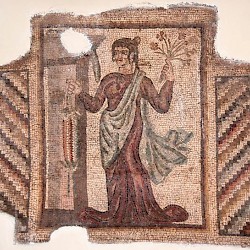 Bishapur, Palace, Mosaic of a lady with flowers |
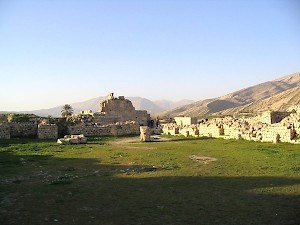
On several places, stucco decorations have been excavated. Again, the patterns were inspired by Greek and Roman art, like leaf scrolls and meanders. On many places, traces of yellow, black, and red paint are still visible.
To the west and east of the central, cross-shaped hall are the rooms that are known as the western and eastern mosaic halls. In the last-mentioned hall, the small relief of Bishapur was found. To the north was the mysterious building that is commonly known as the "temple of Anahita". It has the same orientation as the palace but appears to have been a separate monument.
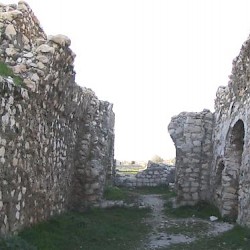 Bishapur, Palace, Corridor |
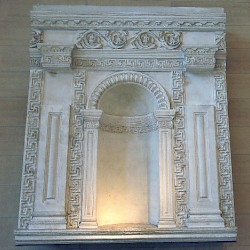 Bishapur, Palace, Stucco apse |
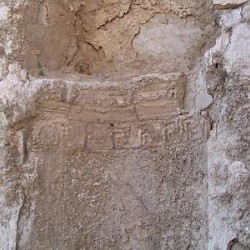 Bishapur, Palace, Cross-shaped Hall, stucco apse |
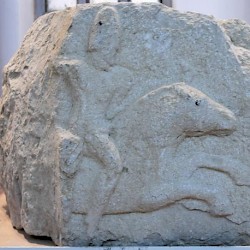 Bishapur, Palace, Eastern Mosaic Hall; traces of paint are still visible |